Local author Burton Coon 1869-1942 wrote daily. In articles published in the Rhinebeck Gazette and Red Hook Journal, he depicted his life on the farm and the surrounding small communities of Milan, Red Hook, and Rhinebeck in upper Dutchess County, New York. His use of self-reflection and the act of questioning the world around him continues to make his writing relevant today.
Burton Coon descendant Bonnie Wood, creator of Keeping NY History Alive, shares his writing in this blog as well as her books Stone By Stone Building a Farm and A Family 1846-1988 and Memories of Ol’ Red Hook From the Burton Coon Collection.

Webster Coon Road in Milan, at Shookville. The home stands today but remodeled.
Click Here for Index With link to All Prior Blog Entries.
Blog Post #14: 2018 Sep 10 ~ “The House of God at Rock City”
Reading “The House of God at Rock City” by Burton Coon is timely now as we celebrate the 150th anniversary this morning. As we begin to recognize the genuine giving nature of John Griffin Schultz, a descendant of the Revolutionary War patriot Jacob Schultz and son of David Schultz and Lucy Griffin Schultz, we also realize how our ancestors were guided by the principles of faith in their daily lives. The article and photos shared can also be found at:
https://milannyhistory.org/mlcrc/
The House of God at Rock City
By Burton Coon, October 27, 1939
I thought it might interest some of the readers of The Gazette to know the beginnings of the Lutheran Church at Rock City. John G. Schultz was a sturdy Christian of the old school who loved and believed in the Word of God and all the cardinal doctrines of the Lutheran Church. He lived on the farm now occupied by Benj. Collins. He and his wife, who was Betsey Stall, a sister of Henry A. Stall, were members of the Lutheran Church in the village of Red Hook and they went there every Sunday to meeting. But that was 4 miles away and Rhinebeck was 6 miles away and the Rowe Methodist Church was 4 miles away and the Methodist church at Shookville, 2 miles away was weak and unsuitable as to location; all of which left the growing community of Rock City without a religious service on Sunday. Naturally, as a good Christian man, he was anxious for the spiritual welfare of his neighbors. So,being in good circumstances at the time, he selected a plot of ground in a corner of his farm near to the village and built thereon a neat little chapel. David Kipp, a carpenter and contractor, living in Red Hook, did the work. Frank Schultz tells us that as a boy he remembers seeing the men at work and also helped a bit to draw stones for the foundation with a yoke of oxen. That was in 1868. And it was duly finished and dedicated on the 15th day of September. The Rev. Wm. Shool, D.D. conducted the services.
Being a benevolent project from the start, Mr. Schultz took the entire economic responsibility for it. He got the ministers where he could and paid them out of his own pocket. He organized a Sunday school, provided the literature and acted as superintendent. He called it a Mission at that time, and such it was. There is no record of who the first pastors were until 1872 when Rev. Wm. A. Mackey, a Methodist preacher stationed at Elizaville was called in to help out. That was probably an evening service, as Mr. Mackey had a morning and an afternoon appointment besides. It can be seen from this that Mr. Schultz was not a bigoted sectarian, but reasonable enough to believe that some good could be found in ministers of other denominations. Later on he employed a Baptist minister by the name of Barnes, from Rhinebeck. It is likely, too that in these early days he was his own sexton, to save expense. Besides being superintendent of the Sunday School, he was either a deacon or an elder in the church council and secretary and treasurer of the church for many years. In fact he was general manager and assumed responsibility for the whole thing. It was his “Mission”, dedicated to God, and I suppose he considered it his life work.
An early record book states that on the 5th of October 1872 Mr. Schultz presented to the New York and New Jersey Synod a deed for the property through Rev. T. T. Everett who was pastor of the Lutheran Church at Red Hook. This was accepted by the Synod by a rising vote. Up until that time there seems to have been no formal organization for the record says that on May 25, 1873 the first church council was installed as follows: Elders: Wm. P. Stall, John G. Schultz; Deacons: Isaac A. Schultz, Cyrus R. Dedrick. These were elected for 3 years. They were installed by Rev. A. C. Wedeking, D. D. of New York who visited the Mission for that purpose. Previously, at a communion service held April 23rd “five grown persons were baptized and two confirmed. Two more were ready to join by certificates.” The first roll of members received by Rev. Thos. T. Everett on that day were as follows: Jacob Hapeman, Hannah E. Stall, Cyrus R. Dedrick, Sarah Dedrick, Isaac A. Schultz, Elizabeth W. Schultz, Lucy Ann Tipple. And on May 4th, 1873 Rev. S.G. Finckel received Conrad Battenfeld and Henry Jacoby. Again on July 20, 1874 Rev. T.T. Everett received Gilbert Rush Haines and Mary Elizabeth Dedrick. The Rev. Samuel S. Finckel referred to was pastor of St. Peter’s Stone Church of Rhinebeck. “Conrad Battenfeld” was the grandfather of Edwin Battenfeld and “Henry Jacoby” was the grandfather of Judge Frank Jacoby.
Then on Oct. 11, 1874, David Tipple, Jacob Halenbeck, Manson Shafer, Sarah Halenbeck, Manson Shafer, Elizabeth Shafer, Conrad Battenfeld, Jr. and Elizabeth Battenfeld were received by Rev. S.G. Finckel. Again on March 28, 1875 John Henry Shoemaker, Elma Fero, Martina Tipple, Mina Hause, Mrs. Mary Cookingham, Ursula L. Cookingham, George Shaffer, Fanny Shaffer, Libbie A. Stall and Abram Hoysradt were received by Rev. S. Finckel. Again on Apr. 9, 1877 Herbert Neher was received. Dec. 1, 1878 Mrs. Martha Rowe, Ervin I. Dedrick, Mary E.H. Dedrick, Ella Neher, Sarah Pindar and Delia Decker were received by Rev. J.G. Griffith of Wurtemburg. Mrs. Decker was received on the 5th of January 1879.
Thus far 39 members had been received in less than 6 years and most of them by Rev. Finckel. He was followed by Rev. J.G. Griffith who on Dec. 19, 1880 received by letter from the Red Hook Lutheran Church, John G. Schultz and Elizabeth his wife. Mr. Schultz was now in the fold of his own building and thence forward that was to be his only care. On the same day Fanny Stall, John J. Hanover, Nathan C. Doyle and Judith his wife and Pauline Kilmer were received. And on March 6, 1881 Abraham Dedrick and Mary his wife were received by letter from Rhinebeck. And on March 15 Wm. A. Coons and wife by letter- he from Wurtemburg and she from Rhinebeck. And on Apr. 17, 1881 John Paul Battenfeld, by confirmation and Lucia W. Schultz by baptism. These last two afterward became the main pillars of the church and stood by it through thick and thin for more than 50 years. We all knew them — John Battenfeld and Lucy Schultz, who late in life married John’s brother Henry and they were known for miles around, wherever the church was known. They both gave to the church their time and strength up to the last. Lucy was a teacher in the Sunday School for many years and John made all the interests of the church his special care. Years ago a resident of the place told me that if it wasn’t for John Battenfeld and one other man the church would be closed. We all loved him for his simple honesty and untiring devotion.
On April 8, 1883 Miss Mary Shaffer was received by baptism by Rev. D.S. Mackenzie. I think he was pastor at Rhinebeck. Miss Shaffer afterward married Reuben Pultz of Wurtemburg. The Rev. Mackenzie was followed by Rev. John Kling of Wurtemburg and Rev. J.A. Josenberg of Manorton. Mr. Rosenberg preached the last Sunday of each month. On Apr. 24, 1887, Mr. Kling received Virgil Wildey and wife and Wm. L. Wildey their son, and Miss Emma Tipple. Mr. Kling was followed by Rev. A.M. Whetstone of Rhinebeck and he by Rev. Geo. W. Fortney of Wurtemburg. Oct. 7, 1888 he received Libbie A. Cookingham, John Flack and Eckert Battenfeld. And so the record goes on, year after year. Some of the members died, some moved away, some probably dropped out, but the church lived on. Not more than half a dozen members of 50 years ago are still living, among them being William L. Wildey of Barrytown, Mrs. Emma Tipple Coon of Trail’s End, Mrs. Libbie Cookingham, Rossman Clark, John Flack, Mrs. Lettie Rowe Traudt and Mrs. Elma Fero Sherwood who has been a member (for) 64 years. That is a long time to be associated with God’s people in this world. God bless her! God bless them all!
The second church council was installed July 1, 1877, probably by Rev. Finckel. The list follows:Elders: David Tipple, Jacob Halenbeck; Deacons: Isaac A. Schultz, Herbert Neher; Trustees: Eli Fero, Henry Feller, Gilbert R. Haines. Eli Fero was the village shoemaker and had his shop over the store. He was a Methodist, a member of the Shookville church and a close friend of my father. Many a night he and my father and Mr. Schultz and Mr. Tipple and other choice would gather in the upper room of the old school house and pray and sing and shout the praises of God together. What a good time they had! Better than any night club the devil ever assembled. And no headaches the next morning. I have been with them at such times and I know. Mr. Fero was also the Bible class teacher in the Rock City Sunday School for many years. He died March 1883. He was a man of great power in prayer. Henry Feller was also an eloquent man, though he had no particular education. The fact is the Spirit of God took possession of these men and spoke through them as He did through the prophets.
According to the record Rev. T.T. Everett received in all 6 members: Rev. Samuel G Finckel (received) 24 members; Rev. J.G. Griffith (received) 19 members; Rev. John Kling (received) 10 members; Rev. J.A. Rosenberg (received) 1 member; Rev. A.M. Whetstone (received) 1 member; Rev. Geo. W. Fortney (received) 28 members. I do not know how many were received by Rev. E.G. Hay, who followed Mr. Fortney, but he reported to Synod Sept. 14, 1898 a membership of 55. And in Sept. 1903 a membership of 64. I have no further record along that line.
Rev. Mr. Fortney came upon the scene sometime during 1888, for in October of that year he took with him to Synod $23.61 as the offering of the church, presumably for benevolences. He remained until the fall of 1895 when the Rev. E.G. Hay came. Mr. Hay had already been pastor at Red Hook for a year or so, and he served the Rock City church until he left Red Hook. He preached his last sermon Sept. 15, 1907. From then until the next April the church was served by Rev. B.S. Crosby, a minister of the Christian denomination, located at Milan Hollow. Rev. G.E. Hipsley preached his trial sermon Apr. 12, 1908 and became the regular pastor May 3rd. Mr. Hay and Mr. Hipsley were then paid by the Sunday, $3.00 each time they preached–no preaching, no pay. Now he is hired by the year ($300) and granted a month’s vacation. Another interesting item is that “from Apr. 4 to May 16th inclusive, 1897, Rev. E.G. Hay preached 7 Sundays for nothing to cancel the indebtedness of Mr. John G. Schultz to the church, $20.00. That I suppose was when Mr. Schultz failed in business and didn’t have money enough to pay his debts. Anyhow it was a noble and generous act on part of Mr. Hay to clear the record and leave his memory without a stain. Mr. Schultz died penniless. For a number of years he was entertained at the Minister’s Home in the city of Washington, D.C. He lived to be 96. Economically he was a victim of the depression which swept over the country in the early 90’s. He once told my father that it cost him $70.00 a year to maintain the church. The spiritual value of his life was incalculable.
The earliest paid sexton of the church that I know of was John. J. Hanover. He lived about a mile up the road on the hill. My best recollection is that he got only $15 per year. He was followed by Henry Rossman. Then Robt. A. Day. Then John Funk during 1907-1909. He received $25 per year. A. Day was again employed at $25 which was afterward raised to $30. Then Mrs. W.J. Hover. John Hirsch acted as sexton for a short interval. The sexton now receives $2.00 per Sunday.
John G. Schultz was secretary and treasurer for many years. Later Wm. L. Wildey kept the accounts from Apr. 1, 1897. Then March 28, 1903, Frank Jacoby, sec. And treas. Mar. 20, 1909 Frank G. Shaffer, sec and tres. Now Mr. F.A. Halbroder has the job. These officers served without pay.
Many interesting items appear on the account. In the beginning the collections were small, mostly under a dollar. One was 5 cents, several were 7 cents and 10, 12, 14, 15, 20, etc. They were what might be truly called “penny collections”, when the good old-fashioned penny meant more than it does now. But even in the early days, while Mr. Schultz was Superintendent of the Sunday School there were entries like the following: “Pd by the children of the S.S. to the Treasurer of Gen. Synod for the Children’s Missionary Society $3.00”, “Collection taken for Missions $8.00” Again “Collection for Missions $8.57”, “Nov. 6, 1884, contributed by the Rock City Sunday School to the Children’s Memorial Fund of Kansas City, MO $10.00”, “Sept 1, 1890 extension $8.50, “July 1 for Education, $5.00”, “Sept. 6 for Education, $5.30”, “June 29, 1892, Collection for Orphan’s Home, $5.00”, “Aug. 15 for Foreign Missions (S.S.) $4.32”, and so on. There is one unexplained item as follows: “Rec’d May 28, 1909 from Old Maid’s Club, $32.03”. Good for the old maids! The Lord needs them.
Blog Post #13: 2018 JUL 16 ~ A Walk
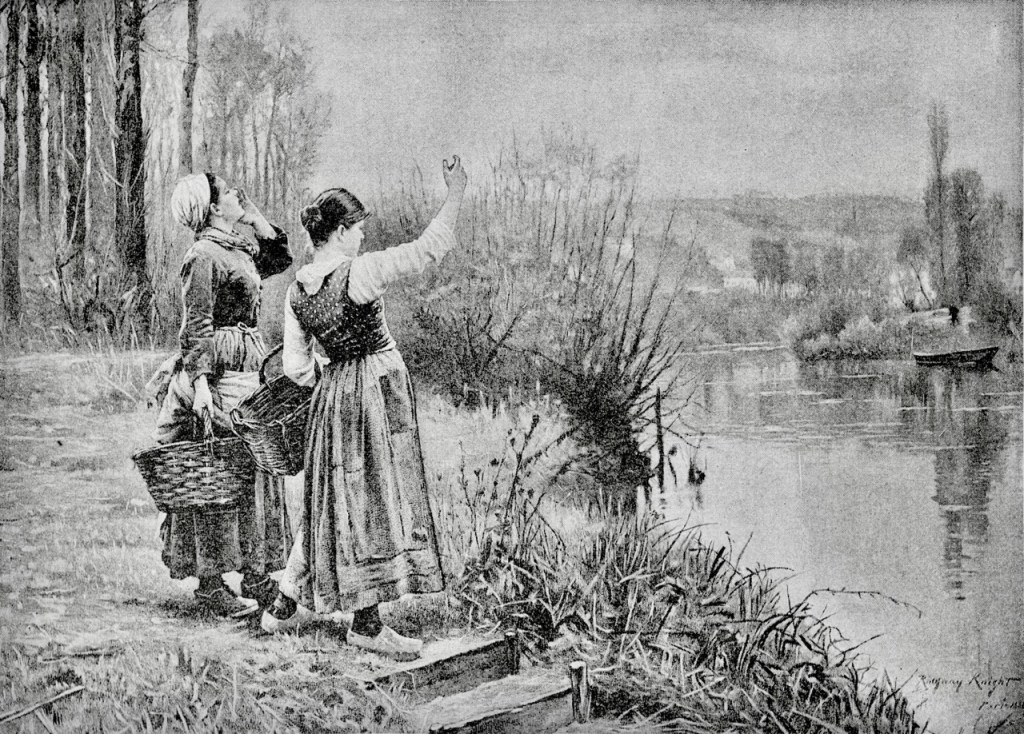
“A Walk in Winter” by Burton Coon is the ideal article to read on an oppressively humid day. As we recall those winter days just a few months ago, we come to the same conclusion. Regardless of the day, when “you descend the hill, cross the barnyard and follow the little path up to the house, …you slip into the old armchair, tired but happy and conscious that after all ‘there is no place like home’”.
There is something about a walk to take away concerns and thoughts of responsibilities. Whether observing the deer and turkey families to the neighbor excitedly exclaiming that he saw a “large black bear” yesterday or the sound of “the woodsman’s ax which speaks of home and a cheerful fireside” in the winter, the path you choose will be the right one.
“Don’t plan to go anywhere. Just go over the hill and wander in whatever direction your fancy leads. You will know better where you want to go when you get in sight of it”. Take the first step to explore the familiar and sometimes the unfamiliar in this world around us.
Image: “Hello” Annual for the Year 1893 Epworth Gleaner Red Hook NY page 6.
Blog Post #12: 2018 JUL 13 ~ The Garden of the Heart
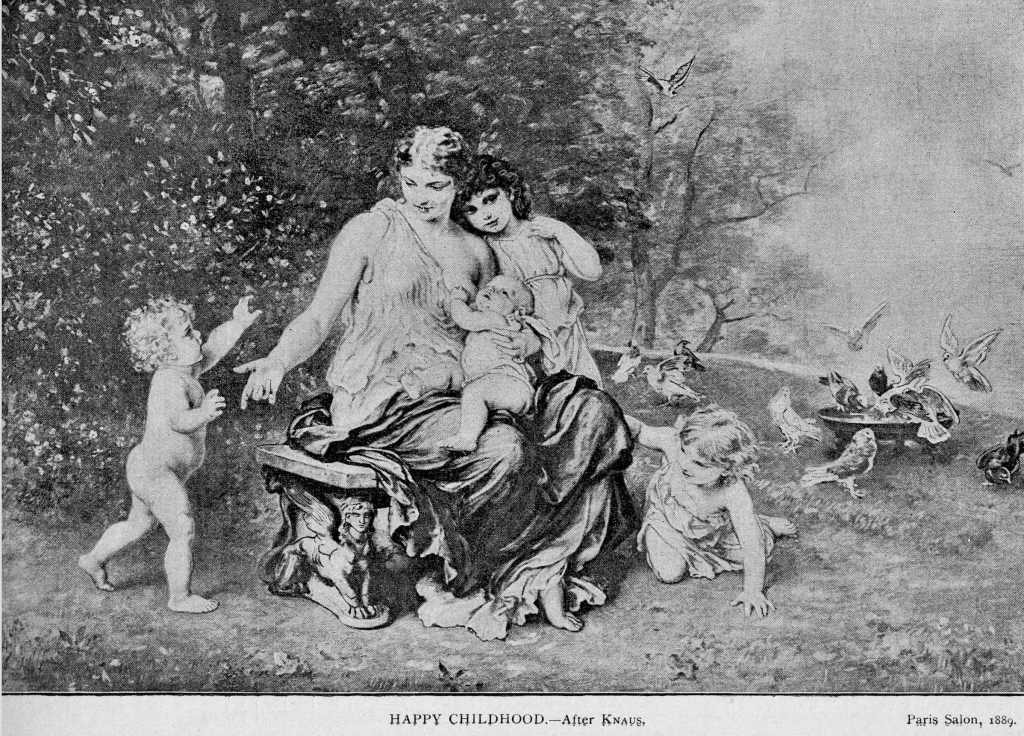
Burton Coon writes about two gardens in his articles, “In the Garden” and “Memory of Mrs. David S. Funk”.
In the kitchen garden on the Coon farm, Burton straightens up to rest after hoeing and “‘Little Alf’, the Angora cat, runs up [his] back and over [his] shoulder”. The horses are in the pasture lot; the vineyard ‘is loaded with grapes”; and varieties of beans, beets, cucumbers and so many more vegetables are plentiful.
In his tribute to Mary Funk, a family friend, he describes his “surprise to find down among the weeds and grasses and vegetables [of the garden] the most beautiful flowers- roses and pinks and lady’s slippers and gladioli and zinnias. And their fragrance filled the air”. He likens this to those special friends living amongst us who give of themselves. “Thank God for the sweetening influence of their lives.”
Burton derives “satisfaction” from his work in the garden and describes how “in the garden of the heart there bloom the finest graces- love, tenderness, sympathy, neighborly -kindness, generosity, and that most rare and beautiful flower of all- self forgetfulness”. Let us nourish both gardens which provide such delight in our lives.
Blog Post #11: 2018 JUL 11 ~ The Old Peach Tree and Old Friend
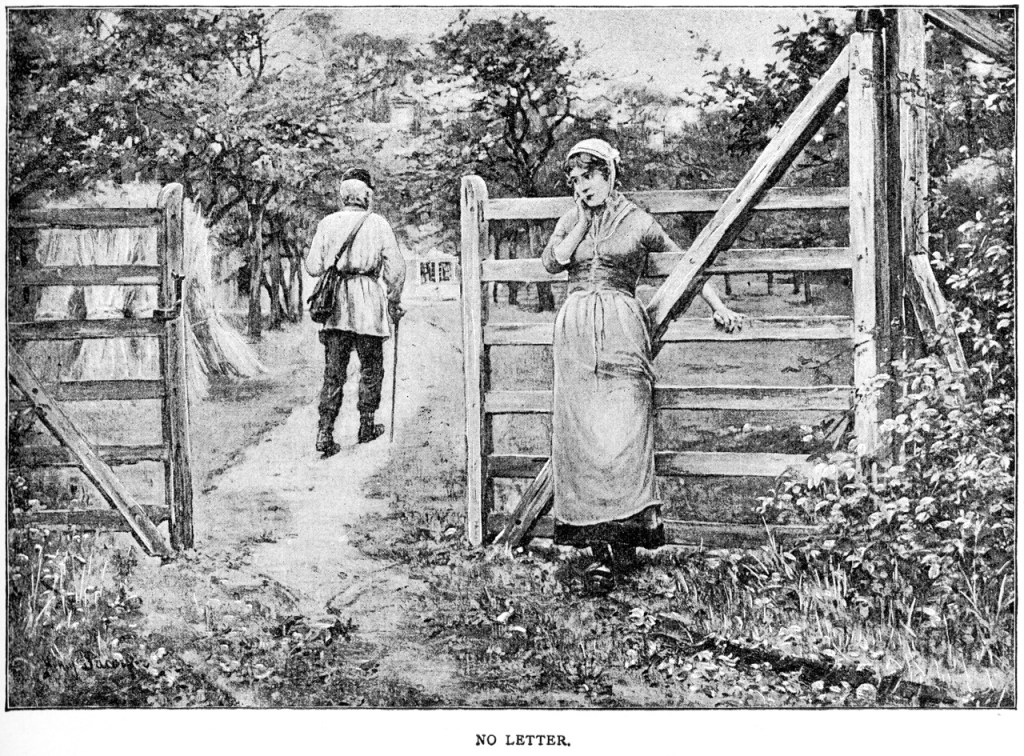
Burton Coon reminisces about the old peach tree “in the little lot back of the barn” and an old friend, the postman Robert G. Moore, in his article entitled “Here We Are, Robert”.
When he questions, “tell me why it is that we wait until our friends are dead and then kiss them”, we reflect on our own friendships and empathize with Burton. Perhaps “we take it for granted that our friends know our feelings toward them”. Perhaps we state simply, “I liked him”.
As time passes, “The old peach tree is gone- so is Bob”, and we realize “that bit of memory is very [so very] precious to [us]”. Like Burton, we may also have that stump or that artifact that triggers these “precious” memories.
For a synthesis of friendship and the farm garden, see Blog Post #12 for a discussion of “In Memory of Mrs. David S. Funk” and “In the Garden” where Burton acknowledges that “down in the garden of the heart there bloom the finest graces- love, tenderness, sympathy, neighborly -kindness, generosity, and that most rare and beautiful flower of all- self forgetfulness”.
Image: “No Letter” page 25 of Annual for the Year 1893 Epworth Gleaner Red Hook NY
Blog Post #10: 2018 JUL 2 ~ A Lesson From Nature

“Yes, life is good – just to live”, Burton writes as he reflects upon Nature- “the tree, the wayside flower, the insect, and the farm animal”. He focuses on how Nature is content whereas Man tends to be discontent and to desire what it is that he does not have.
It is not the location or the environment in which Man finds himself but his “intimate possessions—namely, his conscience, his character and his will”* which should reign superior to all worldly goods. When Man does “remember that the center of human progress is moral growth”*, he becomes content in his “simple life”.
Burton’s mention of Wagner’s concept of “the simple life” affirms his own feelings of satisfaction on his farm in Milan. Despite youthful dreams of various careers away from the farm, Burton accepts his responsibilities by first completing his daily chores and then sharing his beliefs and his thoughts on the world around him in his writing.
On a side note, a reflection on a recent week spent in Manhattan accentuates this notion that content is measured within oneself and is not a product of a romanticized view of any locale. Although it is pleasurable to travel to new and/or different locales, true content blooms within whether on the farm, in the suburbs, or in the city. Let’s be mindful of this beauty.
*Excerpt From: Charles Wagner. “The Simple Life.” iBooks.
Blog Post #9: 2018 JUN 29 ~ Then and Now: Life on the Farm
“It might be interesting to live for the next 100 years just to see what will happen,” Burton speculates as he compares farm life when he was a young man in the last decades of the 19th century to a time sixty years later.
Recalling his days on the farm observing his father “an independent man in the social and economic life of the nation” and “helping his mother make candles from the tallow of the beef that was butchered” brings back treasured memories of when the farmer had “time to think, to look up at the sky, and off to the hills to contemplate the deeper things of life”
He wonders, “what next?”, yet we can study life on the farm in the 20th century and even into the 21st century. As we consider the farmer’s life on the farm now, what are our thoughts? Let’s take a moment to contemplate how the farms in Milan today differ from those of the past, how the lives of the farmers today differ, and how the role of the farm in the community differs. Then, let’s reflect on the similarities. Despite mechanization and advances in technology, does farm life still provide the “time to think, to look up at the sky, and off to the hills to contemplate the deeper things of life”?
For further discussion on “the deeper things in life”, see Blog Post #10 for “ A Lesson From Nature”.
Blog Post #8: 2018 APR 1 ~ Trail’s End Farm Notes: A Farmer’s Treasures
In his “Trail’s End Farm Notes” column, Burton highlights the struggles and the joys of the farm family who are “continually wondering what will happen next. What will the season be? Will the crops be bountiful? And if so, will there be rain enough? Or too much?” As he reflects back on his lifetime on the farm, he concludes that his “memories are worth more than all the treasures of Egypt”. Burton captures the value and the beauty of the farmer’s life in his description of these treasures. Although Burton discusses another century, his words remain meaningful today. Photos below of Milan fields today.


Blog Post #7: 2018 MAR 24 ~ 1893 Annual: Recipes and Advertising
When Burton Coon was 23, his family received this 1893 Annual from local merchant P. E. Fraleigh, the husband of the former Lucy Augusta Tipple. Burton probably did not realize then that the merchant would become his brother-in-law when he married Emma Schultz Tipple eight years later. It is likely that both the recipes and images were of interest to the Coon family. Almost one hundred years later, Bessie Anspach Coon donated the volume to the Town of Milan. Today the recipes popular at the time, advertising with the names of many local merchants, and the images are of historical interest.
Blog Post #6: 2018 MAR 6 ~ The Automobile: Money to Morals to Merits
Burton Coon’s “The Automobile” column is a thought-provoking must read. After beginning with a historical overview from the late 19th and early 20th centuries, he explores the impact of the automobile on business and the agriculturist. Then, he proceeds to question its “influence on the morals of the people” from criminals to housewives. In his intended final installment, he describes the merits of this new “experiment”. After further consideration, his final installment includes an article published in 1898 about the effects of the bicycle on the nation. His instructions to the reader to replace the word “bicycle” with “automobile” leads to an enlightening statement about how we tend to accept new inventions throughout history.
Highlights:

Clipping #2: After leading with the comment that “the business of building, selling and repairing automobiles is so stupendous as to dwarf every other industry into comparative insignificance”, he announces “that by far the greatest influence of the automobile on business is felt in the amount of money which it absorbs”.
Clipping #3: Burton focuses on the impact on the agriculturist and wonders “how can he live?” “because the automobile has absorbed so much money from the pockets of the people that there is not enough left to buy” agricultural products.
Clipping #4: He points out that “The very motion of the car is thrilling, especially if it is going fifty or sixty miles an hour. The nerves tingle, the blood rushes through the veins, the head swims, the passions are excited, and the victim soon loses self-control and moral consciousness”.
Clippings #5 and #6: He encourages us to “thoughtfully consider how we may use these things as He intended they should be used- for our own good, and the good of one another”.
Click on first image to start reading:
Blog Post #5: 2018 FEB 14 ~ The Simple Life

In the fourth installment of his “Fifty Years Ago” column, Burton Coon reflected, “Happiness springs from contentment. Contentment depends upon the adjustment of one’s self to one’s environment. And so of course the environment must be congenial. It was so with the farmer of fifty years ago. A man of simple tastes, he had settled down to enjoy the simple life, with his family around him.”
After “plowing and fitting the ground for corn”, the farmer and his wife would take a brief vacation visiting friends and family. “The day would be spent talking about the crops, comparing ideas about farming, hearing and telling about friends and neighbors. And as the afternoon drew to a close, they would wend their way homeward with fresh courage for the battle of life. It was in this simple fashion that the farmer took his vacation, nothing showy, nothing expensive, nothing fatiguing, just a change of scene and a comparison of ideas along the line of his work.”
Oh, today is the day to enjoy “the simple life” on an impromptu vacation day before returning home “with fresh courage for the battle of life”.
This image of Alsike clover (pictured below), a potential choice for “seeding down to clover”, was preserved in Burton’s scrapbook.
Blog Post #4: 2018 FEB 7 ~ From the Garden to the Kitchen
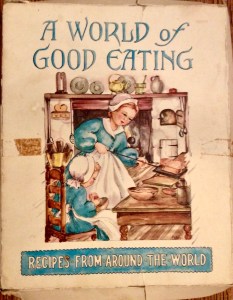
In the third installment of his “Fifty Years Ago” column, Burton Coon reminisced about spending precious family time drying fruit and making home-made yeast cakes in the late 1870s.
In the next generation, Burton’s daughter, Esther Coon Rider, continued canning and would send me down to the cellar to select a chosen jar for dinner. I especially enjoyed her vegetables with meatloaf on a cold day on the farm.
I plan to try her recipe for oatmeal macaroons scribbled in the cook book “A World of Good Eating” (pictured below):
Oatmeal Macaroons
1 cup of sugar
¼ cup of butter
1 egg
a pinch of salt
vanilla
2 cups of oat flakes
Blog Post #3: 2018 JAN 28 ~ Early Fortune (Plows and Potatoes)
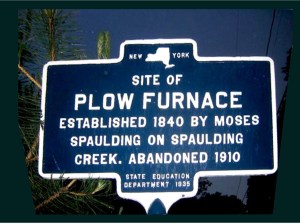
Farmers: Does the Early Fortune potato live up to its name? According to Burton in his memories of the farm “Fifty Years Ago”, “the only factors entering into a potato crop seemed to be the seed, the soil, the weather and cultivation.” He continued explaining that “at least three of these factors were controllable, so it was 3 to 1 that the farmer would have a good potato crop.” Mother Nature notwithstanding, those are pretty good odds.
Blog Post #2: 2018 JAN 22 ~ Spring Work on the Farm
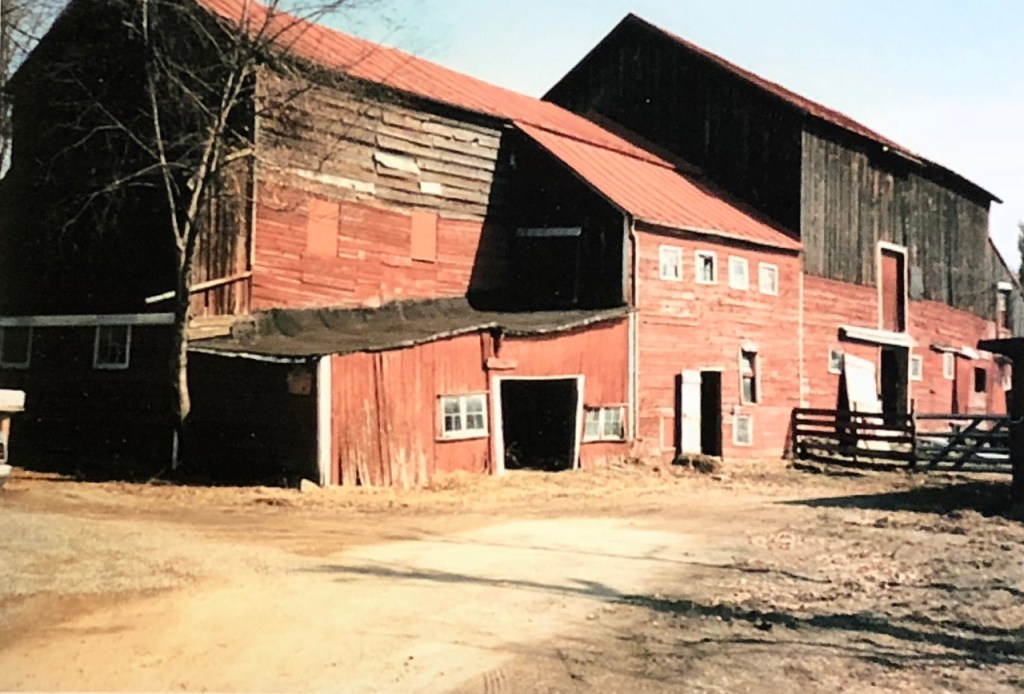
Burton “thought that perhaps some of the younger generation might like to know what we old ones used to do on the farm.” Based on his memories dating back to the late 1870s, his first installment of “Fifty Years Ago” included specific wages for the hired men who worked at Trail’s End each year starting around the first of April. He then proceeded to comment on the lack of a compulsory education law and the hiring of not only men but also young boys as farm hands. -Wonder if our younger generation could imagine a day in the life of a young farm hand in the late 1870s? The barn at Trail’s End was built by Burton’s father William W. Coon (pic below). It is no longer standing, but the original stone foundation still remains on Webster Coon Road in Milan.
Blog Post #1: 2017 DEC 10 ~ Keeping History Alive
Reading “Burton Coon Tells of Trip” to Gettysburg is timely as we honor our veterans. As Burton describes his visit, we not only follow along with him (about 80 years ago) but are also there with the soldiers fighting in the Civil War. We stand in memory at “the 150th NY monument – General Ketcham’s regiment, whose ranks were filled with Dutchess County boys.” Then, we enter “the Valley of Death where brave men fought brave men with the fury of madness”…
Click on left-most image to begin reading. To view larger, click on “full view” at bottom right, once opened.
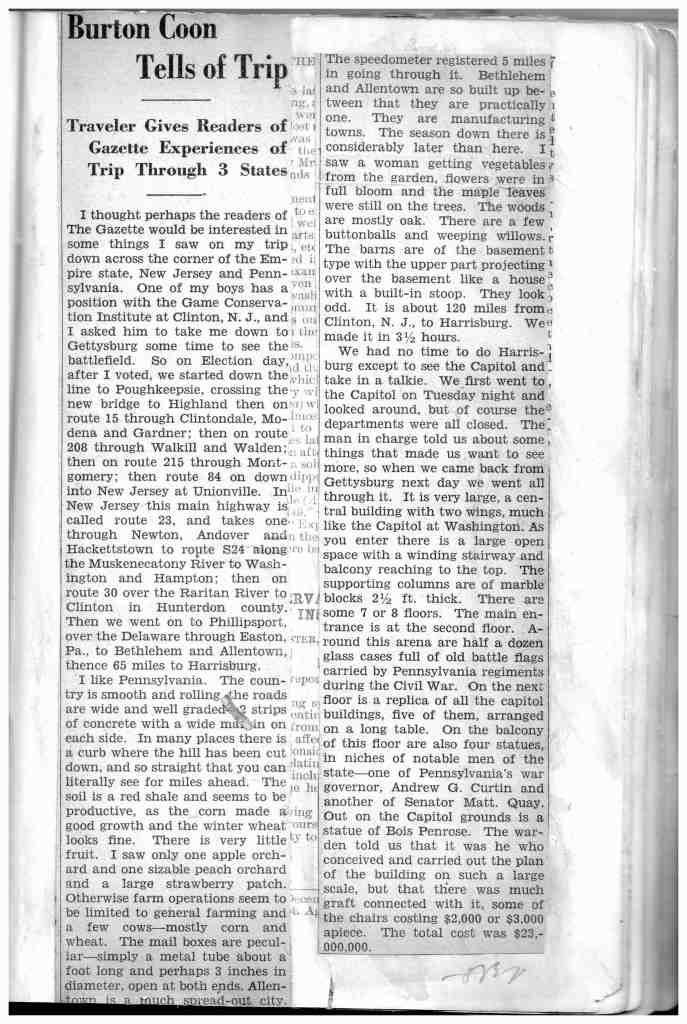
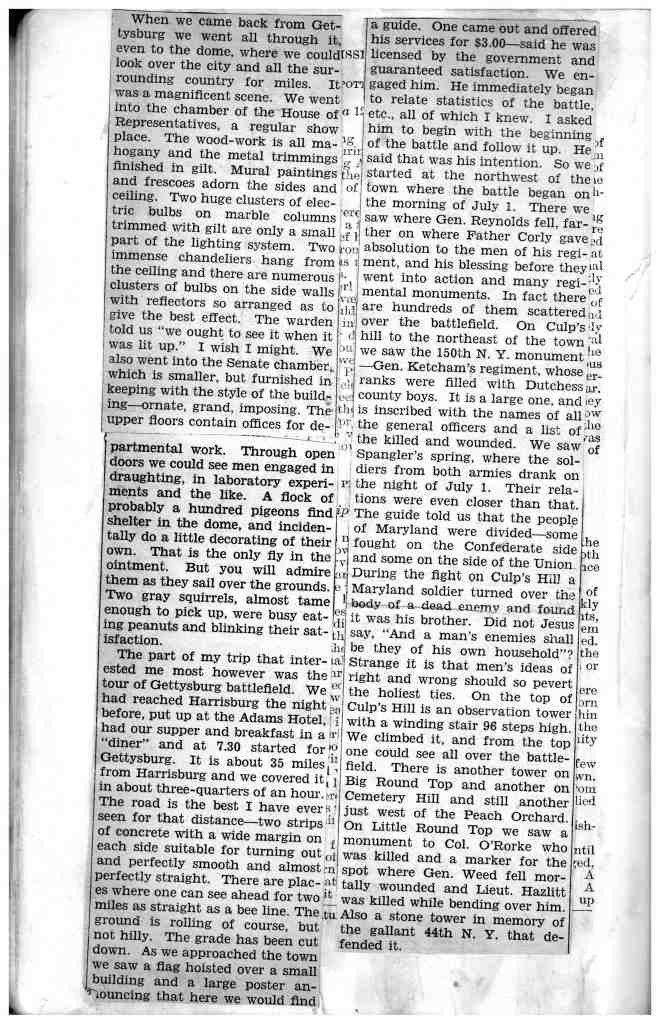

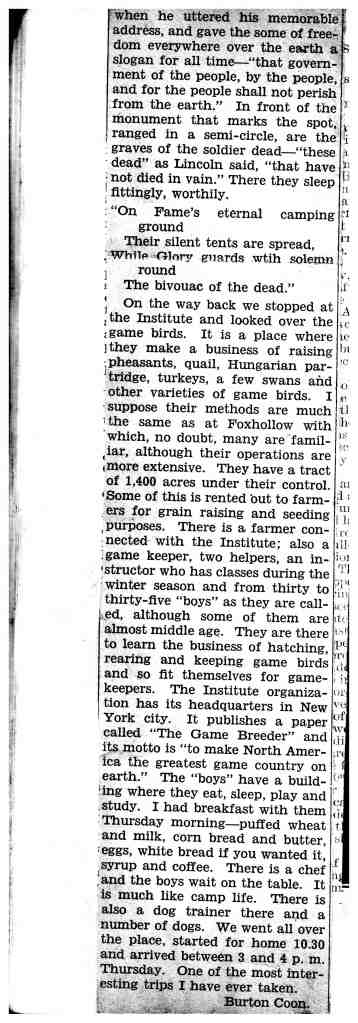
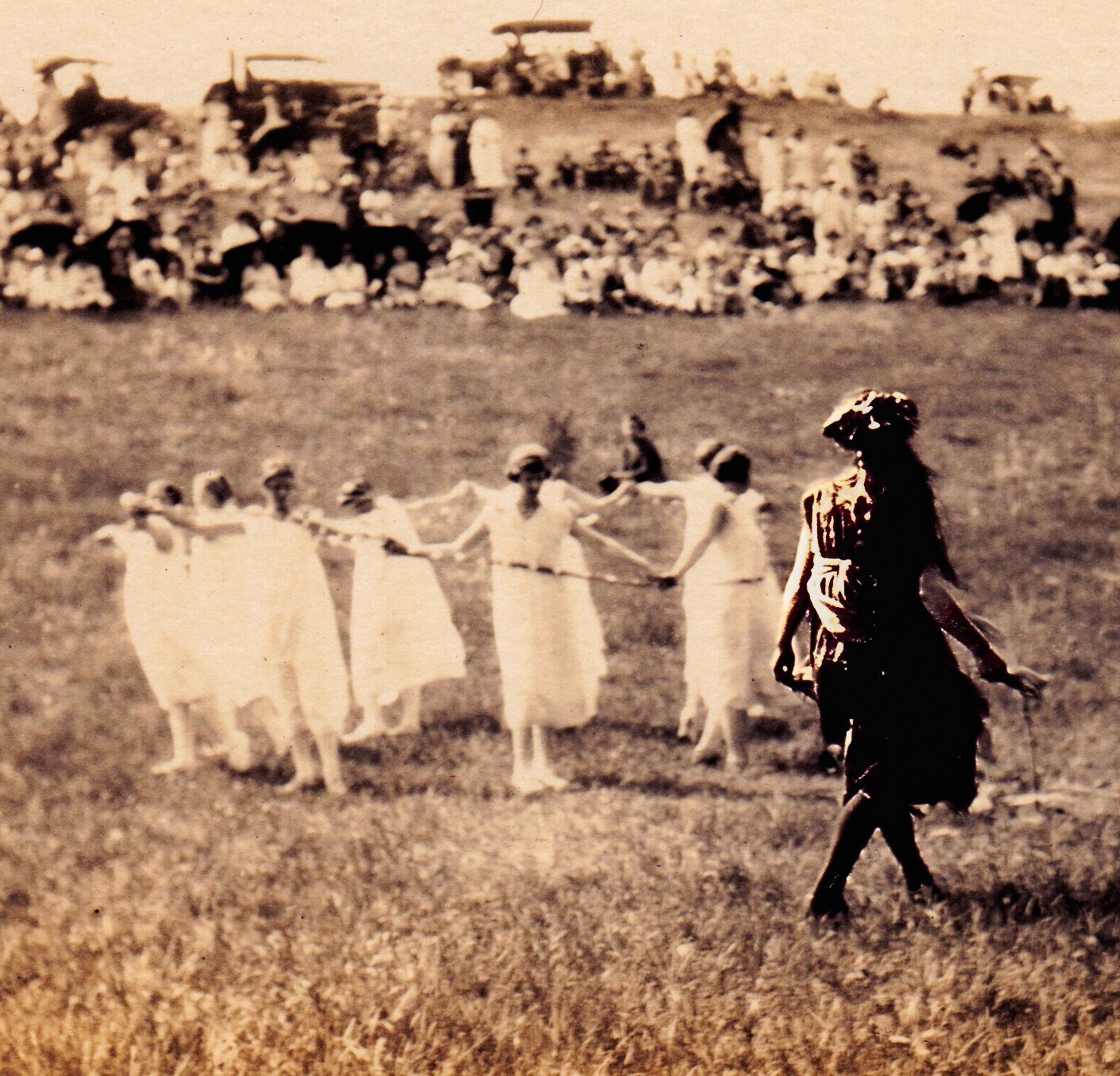
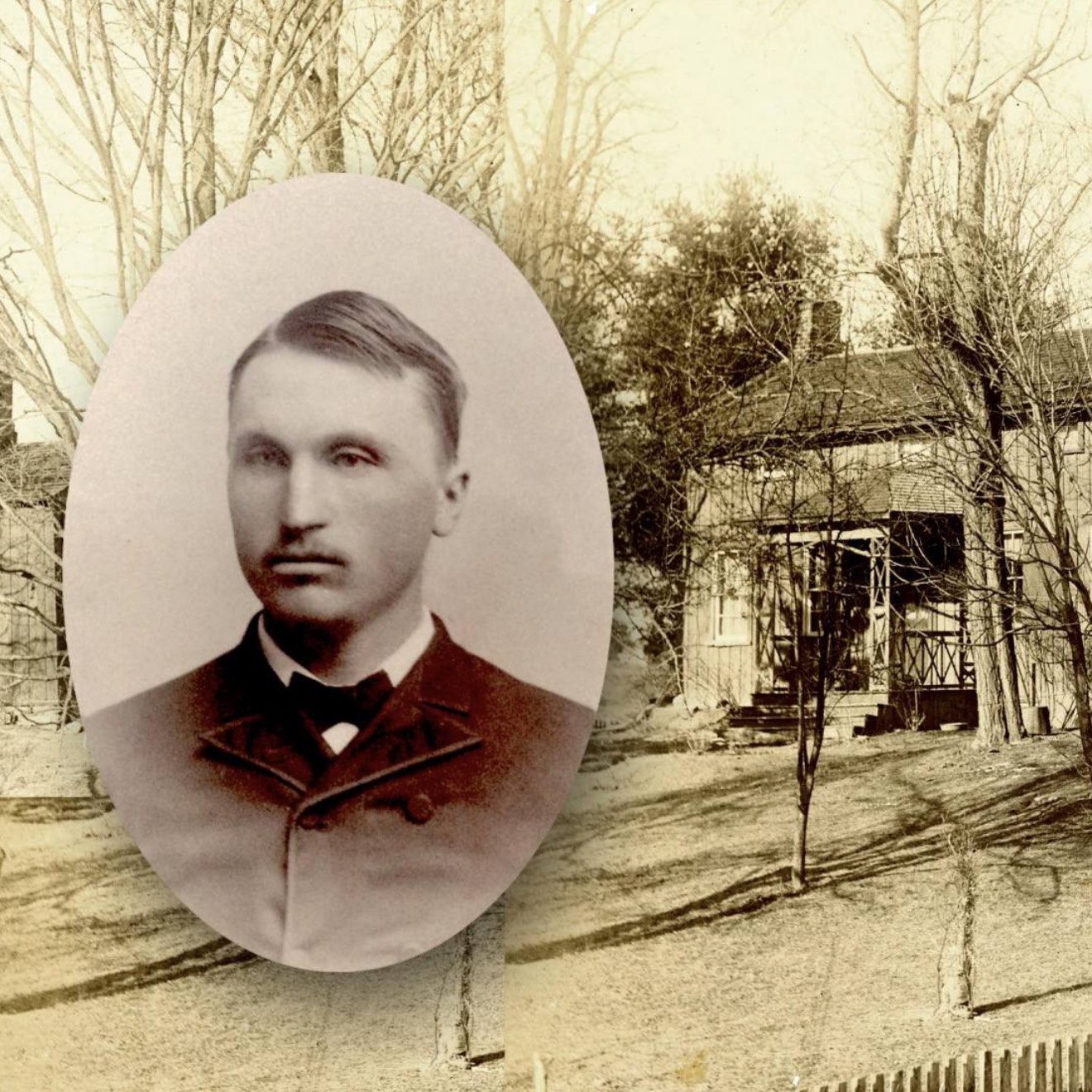
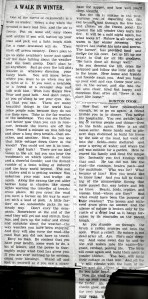
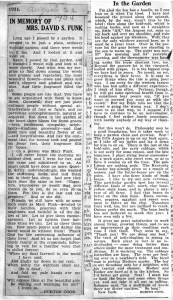
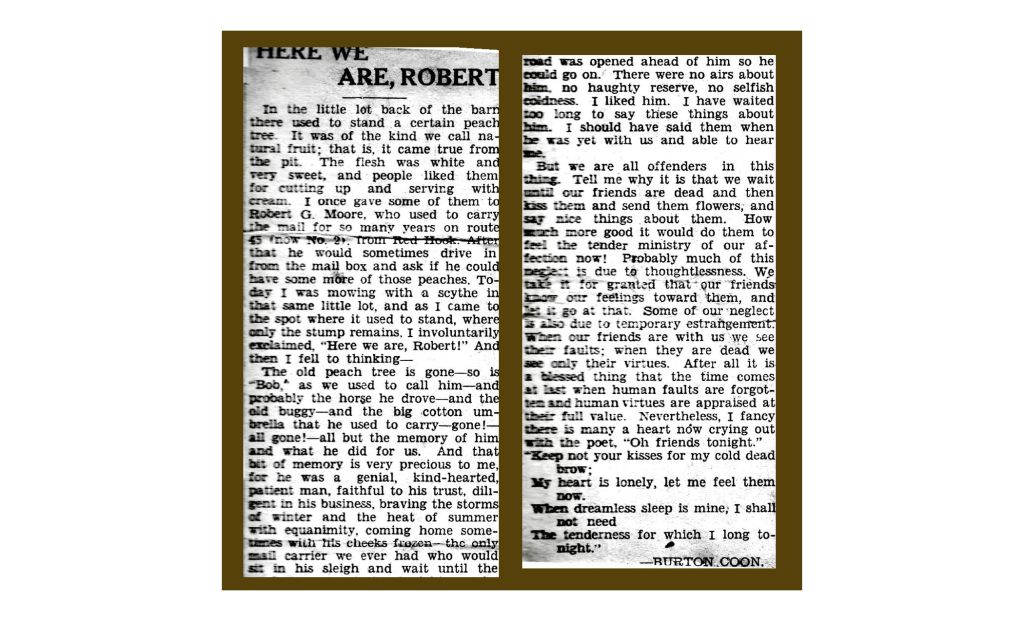

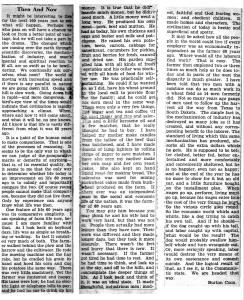
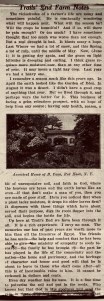
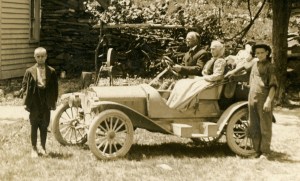







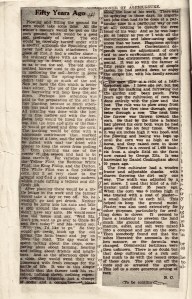

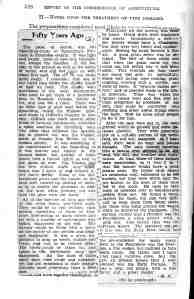
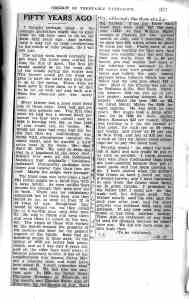
Touring Car: 1911 Buick Model 21, 5-Passenger Touring
Runabout Car: 1911 – 1913 Metz Model 22, 2-Passenger Roadster
LikeLike
Touring Car: 1911 Buick Model 21, 5-Passenger Touring
Runabout Car: 1911 – 1913 Metz Model 22, 2-Passenger Roadster
LikeLike